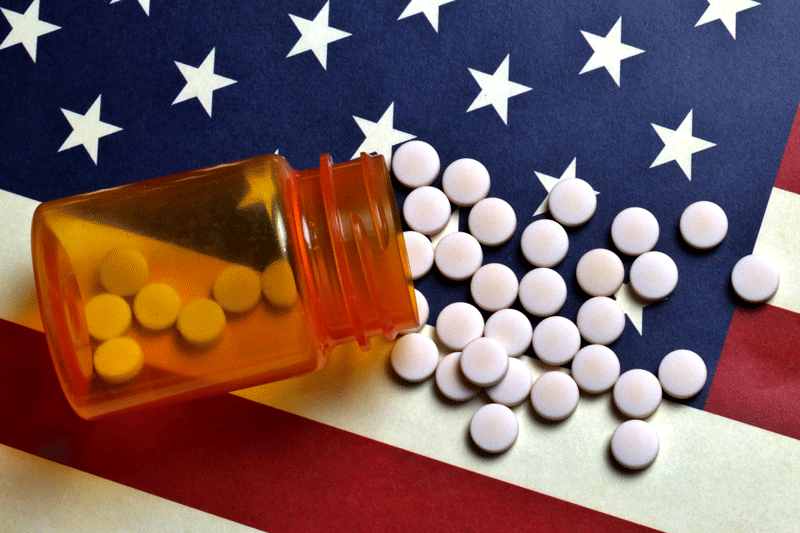
Trump Takes on Opioid Addiction
Opioid addiction has now reached epidemic proportions in the United States. Opioids (highly addictive painkillers such as oxycodone, codeine, morphine, and many others) kill roughly 50,000 Americans each year. As of 2015, roughly two million Americans were addicted to opioids. Another 600,000 were addicted to heroin. Deaths from overdoses have more than tripled since 2002. Last Thursday, President Trump addressed the issue in a national speech.
Related Link: Click here to read the text of the president’s speech on combating the opioid crisis in the United States.
The Importance of Words
Experts agree that a threefold approach is needed in order to treat and slow the opioid crisis: emergency response, treatment for addiction, and efforts to stop illegal opioids from entering the country in the first place. But these methods are expensive. In Thursday’s speech, Trump called the opioid epidemic a national public health emergency. But that doesn’t allow for a large amount of money to be used to address the problem. If he had called it a national emergency, on the other hand, billions of federal dollars could then be devoted to the crisis.
Trump’s Plan
In his speech, Trump discussed his plan to fight opioid addiction. First, he reiterated his plan to build a wall along the southern border of the United States to halt the flow of the drugs into the country from Mexico. Second, he announced that he would be banning one prescription drug outright, though he didn’t say what it was. Third, he pledged to launch an intensive ad campaign aimed at young Americans to convince them to stay away from opioids.
How Effective is This Plan?
Trump’s plan to build a wall between the United States and Mexico has been a controversial point from the start of his election campaign. Building the wall is extremely expensive, and can be complicated logistically. (In some cases, the wall would divide peoples’ property. Also, building a wall over such rugged terrain is challenging.) It is unlikely that simply putting up a barrier will stem the flow of illegal opioids into the U.S. The other part of Trump’s plan–creating an ad campaign aimed at young adults–has been attempted before, with the “Just Say No” campaign under President Reagan in the 1980s. This movement was associated with harsh punishments for drug abusers, rather than focusing on treatment.
So what other possibilities could be explored? Last week, Scott Gottlieb, commissioner of the Food and Drug Administration, suggested using the drugs methadone, buprenorphine, and naltrexone to treat addiction. These drugs have been effective in reducing the number of overdose deaths.
The Role of Health Care
Treating an opioid addiction can be expensive. And unless you have good insurance, you may not be able to afford it. Often, people without insurance will avoid seeking treatment altogether, because they don’t have a way to pay for it. President Obama’s Affordable Care Act (the ACA, or “Obamacare”) tried to solve this problem by expanding Medicaid, which is health care for the elderly, so that many older Americans could receive addiction treatment. However, the Trump administration has repeatedly tried to eliminate, or at least roll back, the ACA. Doing so would take away addiction care from millions of elderly Americans.
Trump did say, however, that he would eliminate a rule that prevents people from using Medicaid dollars to enter large inpatient addiction facilities.


